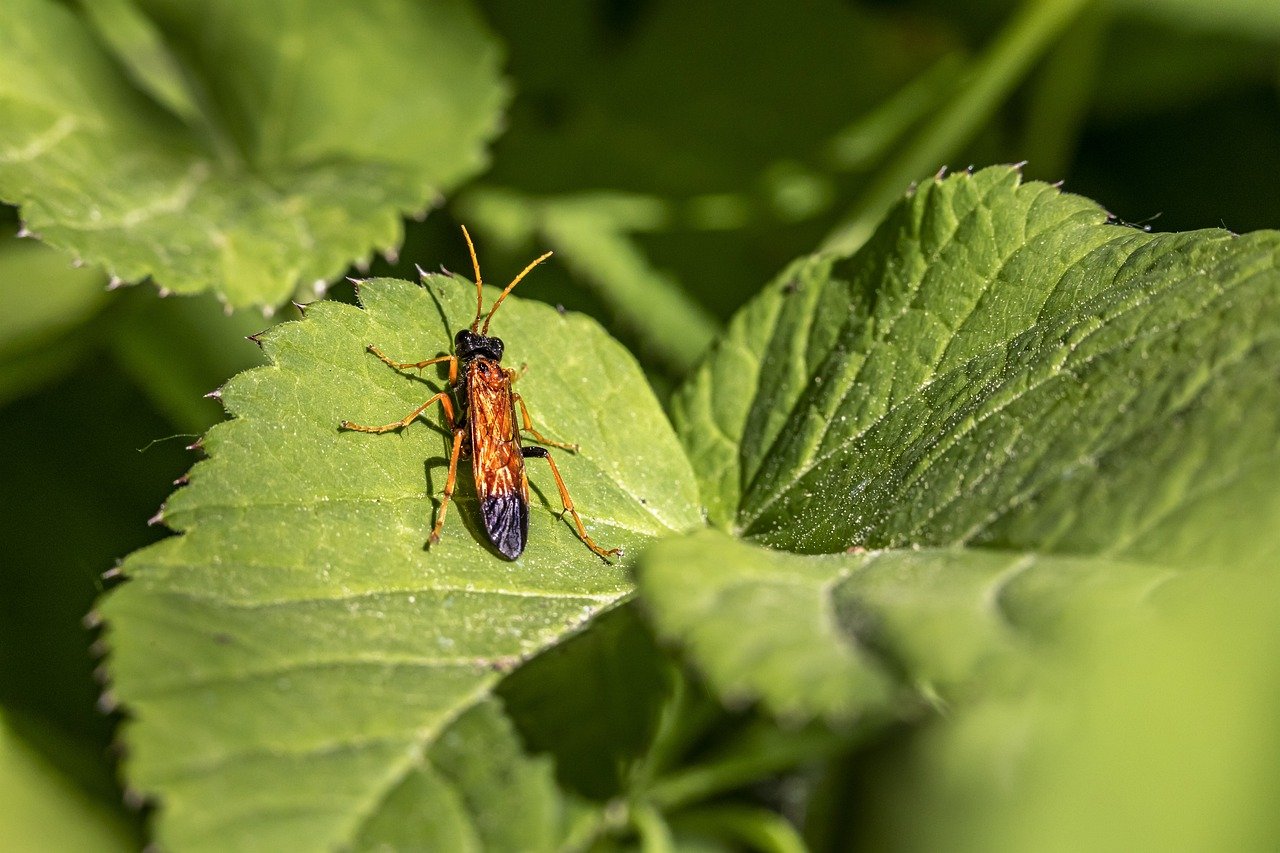The Figwort Sawfly (Tenthredo scrophulariae) is an intriguing species of sawfly that is closely associated with figwort plants. Here are some key details about this insect:
Appearance
- Size: Adult Figwort Sawflies are medium-sized, typically measuring about 10-12 mm (0.4-0.5 inches) in length.
- Coloration: They have a distinctive black and yellow coloration, which can sometimes lead them to be mistaken for wasps. Their bodies are robust, with black heads and thoraxes, and yellow markings on the abdomen. They also have clear or slightly tinted wings.
Habitat
- Range: This species is found throughout Europe and parts of Asia. It prefers regions where figwort plants (genus Scrophularia) are abundant.
- Environment: They are usually found in meadows, gardens, and along hedgerows, where their host plants grow. The larvae feed specifically on figwort plants, hence the name.
Behavior
- Diet:
- Adults: The adult Figwort Sawflies primarily feed on nectar and pollen from various flowers. They are often seen visiting flowers for sustenance.
- Larvae: The larvae feed voraciously on the leaves of figwort plants. They can sometimes cause significant defoliation of their host plants.
- Reproduction:
- Females lay their eggs on the leaves of figwort plants. After hatching, the larvae begin feeding on the host plant.
- The larvae go through several stages (instars) before pupating in the soil or leaf litter.
- Adults emerge from pupae, continuing the life cycle.
Adaptations
- Camouflage: The larvae often have coloration that helps them blend in with the leaves they feed on, providing protection from predators.
- Defensive Behavior: Like many sawflies, the larvae can secrete a defensive fluid to deter predators. Adults rely on their wasp-like appearance to ward off potential threats.
Impact
- Ecological Role: Figwort Sawflies play a role in the ecosystem both as herbivores and as prey for other wildlife. The larvae’s feeding on figwort plants helps control the growth and spread of these plants, while adult sawflies contribute to pollination.
- Pest Status: While not typically considered a major pest, high populations of larvae can cause noticeable damage to figwort plants. This can be of concern in gardens where figwort is grown ornamentally.
Conservation
- Status: The Figwort Sawfly is not currently considered at risk and is generally common within its range. Conservation efforts for this species focus on maintaining the natural habitats where figwort plants and other nectar sources thrive.
- Habitat Management: Ensuring the presence of figwort plants and other flowering plants in meadows and gardens can support healthy populations of Figwort Sawflies.
The Figwort Sawfly is a fascinating example of the specialized relationships that can develop between insects and plants. Its life cycle and behaviors are closely tied to its host plants, highlighting the intricate connections within ecosystems.
Visited 874 times, 3 visit(s) today
Views: 1116
Subscribe to the newsletter:
